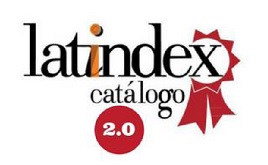Accounting Formula to Estimate the Cost of Equity: An Alternative to the Capital Asset Pricing Model
DOI:
https://doi.org/10.53641/vta8pj71Keywords:
Cost of Equity (Ke), Economic Value Added (EVA), Capital Asset Pricing Model (CAPM), Net Operating Profit After Taxes (NOPAT), Weighted Average Cost of Capital (WACC)Abstract
The determination of the Cost of Equity (Ke) is crucial in finance to assess the viability of investments and make strategic decisions. Traditionally, the Capital Asset Pricing Model (CAPM) has been used to estimate Ke, although it faces limitations for non-publicly traded companies. This study proposes a simplified formula based on accounting data such as Economic Value Added (EVA) and internal financial indicators such as Net Operating Profit After Taxes (NOPAT) and the Weighted Average Cost of Capital (WACC), allowing Ke to be calculated without requiring stock market data. By equating EVA to zero, an accounting estimate of the cost of equity is obtained, accessible to various companies. The formula avoids market biases and provides a practical tool for Small and Medium Enterprises; however, it depends on the accuracy of internal data and does not consider external systematic risk. Future research should validate the formula in different contexts and sectors, integrating macroeconomic factors and adjusting for various business scenarios.
Downloads
References
Antoniou, C., Doukas, J. A., & Subrahmanyam, A. (2016). Investor sentiment, beta, and the cost of equity capital. Management Science, 62(2), 347–367.
Black, F., Jensen, M. C., & Scholes, M. (1972). The capital asset pricing model: Some empirical tests. Social Science Research Network (SSRN).
Damodaran, A. (2005). Estimating Discount Rates. DCF Valuation. NYU Stern School of Business.
Ding, W., & Cao, R. Z. (2011). An approach to calculate the value of a company. Proceedings of 2011 IEEE International Conference on Service Operations, Logistics and Informatics, SOLI 2011, 89–94.
Fama, E. F., & French, K. R. (1993). Common risk factors in the returns on stocks and bonds. Journal of Financial Economics, 33(1), 3–56.
Koller, T., Goedhart, M., & Wessels, D. (2010). Valuation: measuring and managing the value of companies. John Wiley and Sons.
Lintner, J. (1965). Security prices, risk, and maximal gains from diversification. The journal of finance, 20(4), 587–615.
Magni, C. A. (2021). Internal rates of return and shareholder value creation. Engineering Economist, 66(4), 279–302.
Marshall, A. (1890). Principles of Economics. MacMillan & Company.
Mossin, J. (1966). Equilibrium in a capital asset market. Econometrica: Journal of the Econometric Society, 768–783.
Roll, R. (1977). A critique of the asset pricing theory’s tests Part I: On past and potential testability of the theory. Journal of Financial Economics, 4(2), 129–176.
Sharma, A. K., & Kumar, S. (2010). Economic value added (EVA)-literature review and relevant issues. International journal of economics and finance, 2(2), 200–220.
Sharpe, W. F. (1964). Capital asset prices: A theory of market equilibrium under conditions of risk. The journal of finance, 19(3), 425–442.
Vélez-Pareja, I., & Tham, J. (2009). Market value calculation and the solution of circularity between value and the weighted average cost of capital WACC. Revista de Administracao Mackenzie, 10(6), 101–131.
Downloads
Published
Issue
Section
License
Copyright (c) 2025 Kevin Litman Florez Tolentino

This work is licensed under a Creative Commons Attribution 4.0 International License.









